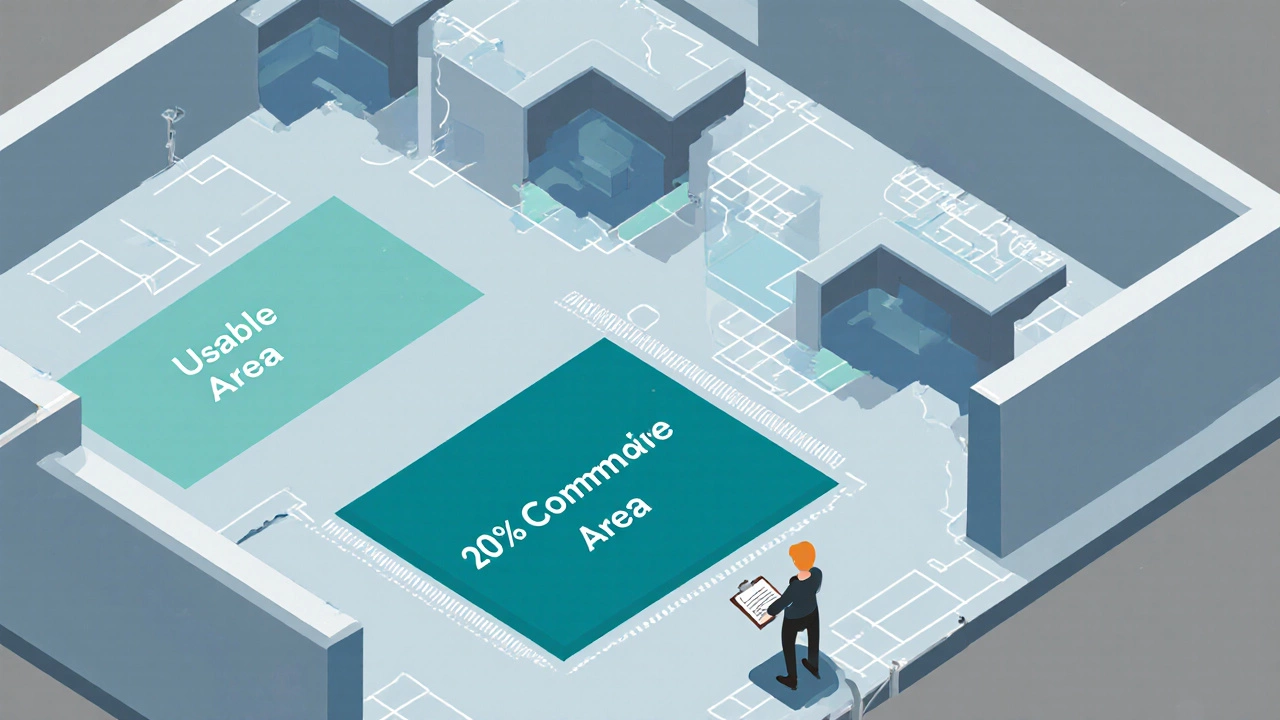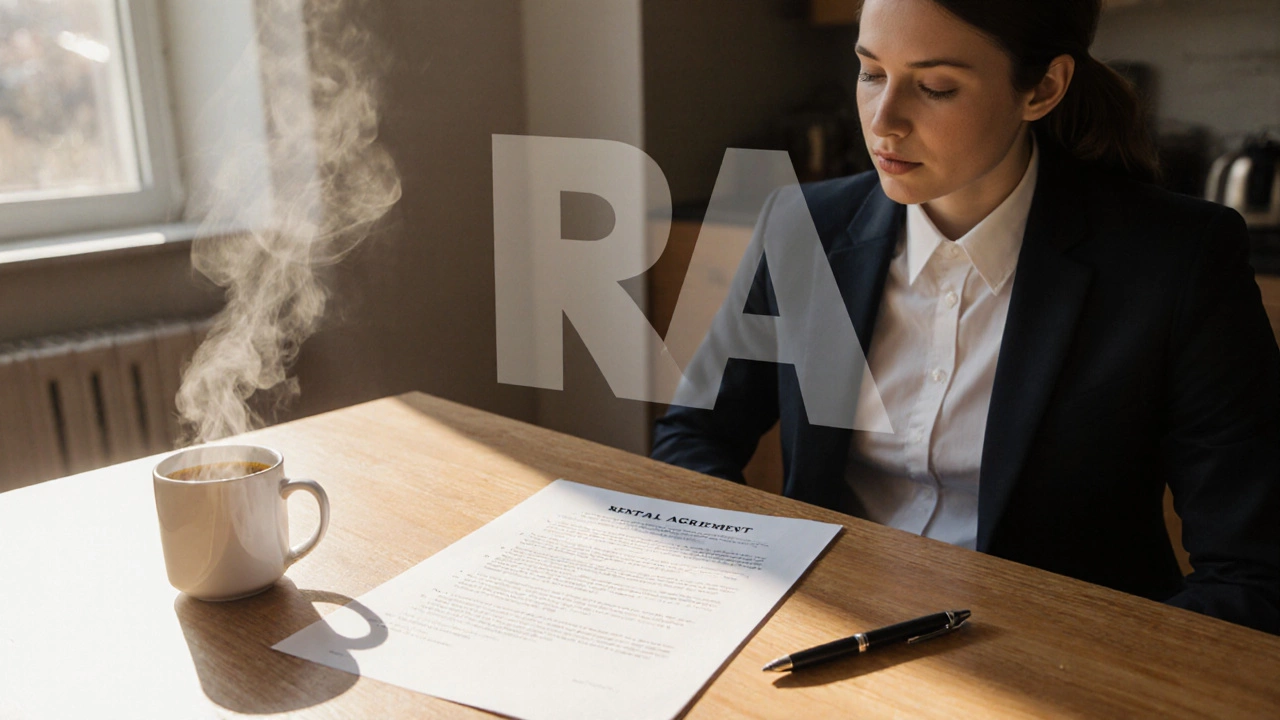Rentable Area Calculator
Rentable Area Calculation
Rentable Area = Usable Area × (1 + Common Area Factor)
Example: 1,000 sq ft usable × (1 + 0.25) = 1,250 sq ft rentable
Why This Matters
Understanding rentable area prevents unexpected rent increases. A 15% common area factor means you pay for 15% of shared spaces like hallways and restrooms. Always ask for a floor plan showing both usable and rentable measurements before signing your lease.
Quick Takeaways
- RA can stand for Rental Agreement, Rentable Area, Rent Abatement, or Rental Assistance depending on the context.
- In residential leases, RA most often refers to the written Rental Agreement between landlord and tenant.
- In commercial property, RA usually means the Rentable Area that determines how much rent you pay.
- Understanding which meaning applies prevents costly misunderstandings.
- Use the checklist at the end to confirm the correct interpretation before you sign anything.
When you scroll through a property listing or glance at a lease document, you might spot the two‑letter code “RA.” It’s easy to dismiss it as jargon, but the abbreviation can actually change how much you’ll pay, what obligations you have, and even which government programs you qualify for. This guide breaks down every common meaning of RA in the UK rental market, shows you how to spot the right one, and gives you a cheat‑sheet to avoid surprise fees.
RA is an abbreviation that appears in rental contracts, property listings, and government forms. Its exact definition depends on whether you’re dealing with residential or commercial property, the type of lease, and sometimes the local council’s terminology.
1. RA as Rental Agreement (Residential Context)
In most everyday rental situations-apartments, houses, shared flats-RA is shorthand for Rental Agreement a legally binding contract that outlines the rights and duties of the landlord and tenant. The document typically includes:
- Names of the landlord and tenant.
- Property address and description.
- Start and end dates of the tenancy.
- Rent amount, payment frequency, and deposit details.
- Clauses about repairs, sub‑letting, and notice periods.
If you see “RA attached” or “RA available on request,” the landlord is simply indicating that a full Rental Agreement can be provided for review before you commit.
2. RA as Rentable Area (Commercial Leases)
When you’re looking at office space, retail units, or warehouses, RA most commonly means Rentable Area the total floor space a tenant can occupy, measured in square feet or square meters.. It includes both the usable space you actually work in and a proportion of the common areas (hallways, restrooms, stairwells). The formula is:
Rentable Area = Usable Area + (Common Area Factor × Usable Area)
Why does this matter? Rent is usually calculated on a per‑square‑foot basis, so a larger RA means a higher monthly bill, even if the“usable” portion feels small. Always ask the landlord for a floor‑plan that shows both usable and rentable measurements.
3. RA as Rent Abatement
In some lease negotiations, especially for new builds or refurbished spaces, RA can refer to Rent Abatement a period during which the tenant does not have to pay rent, often granted as a tenant‑incentive.. Typical scenarios include:
- Construction delays where the space isn’t ready for occupation.
- Fit‑out periods where the tenant must install equipment.
- Promotional offers from landlords to attract high‑profile tenants.
Rent Abatement is usually expressed in months (e.g., “2‑month RA”) and is clearly spelled out in the lease schedule. Missed or misunderstood abatement clauses can lead to paying rent before you actually move in.

4. RA as Rental Assistance (Social Housing)
For council‑backed or charitable housing, RA may stand for Rental Assistance government‑funded support that reduces a tenant’s monthly rent burden.. Programs such as Housing Benefit, Universal Credit housing element, or local authority discretionary assistance often list “RA eligibility” as a requirement. Key points to check:
- Income thresholds and asset limits.
- Maximum rent caps set by the local authority.
- Documentation needed (pay slips, council tax statements).
If a listing mentions “RA approved,” it signals that the property qualifies for these subsidies, which can be a major cost saver.
5. Other Less Common RA Meanings
While the four definitions above cover the vast majority of cases, you might occasionally encounter RA used for:
- Rent Arrears - overdue rent that a tenant owes.
- Resident Agreement - a softer version of a Rental Agreement used in student halls or serviced apartments.
- Rental Application - the form you fill out before a tenancy is approved.
These variations are usually clarified by the surrounding text, but if the document is vague, ask for clarification before signing.
6. How to Identify Which RA You’re Dealing With
Follow this simple decision tree:
- Check the document type: Is it a residential tenancy agreement, a commercial lease, or a council housing notice?
- Look for surrounding keywords: “square footage,” “floor plan,” or “per sqft” point to Rentable Area.
- If you see “abated,” “free rent,” or a date range with no rent charge, think Rent Abatement.
- Mentions of “benefit,” “council,” or “subsidy” signal Rental Assistance.
- Otherwise, default to Rental Agreement.
When in doubt, ask the landlord or letting agent to spell out the abbreviation in plain English. A reputable professional will gladly clarify.
7. Checklist Before Signing Anything with an RA Clause
| Question | What to Look For | Action |
|---|---|---|
| Is the document a residential tenancy or commercial lease? | Header, property type, lease term length. | Classify the RA meaning accordingly. |
| Does the RA reference square footage or floor plans? | Terms like “sqft,” “gross leasable,” "floor area". | Interpret as Rentable Area; request measurement proof. |
| Is there a period with zero rent mentioned? | Words such as “abated,” “free,” “rent‑free period”. | Treat as Rent Abatement; confirm start/end dates. |
| Are government subsidies or benefit codes listed? | “Housing Benefit,” “Universal Credit,” “RA approved”. | Assume Rental Assistance; verify eligibility. |
| Is the term used in a clause about tenant responsibilities? | Language about obligations, signatures, breach. | Likely the Rental Agreement; read the full contract. |
Cross‑checking these points will save you from hidden charges and legal hiccups.

8. Common Pitfalls and How to Avoid Them
- Assuming one meaning for all properties. Residential and commercial markets use RA differently; always verify the context.
- Overlooking Rentable Area calculations. A landlord might quote a low usable area but a high rentable area, inflating rent unexpectedly.
- Missing the end date of Rent Abatement. Some leases automatically revert to full rent after the abatement period, even if you haven’t moved in yet.
- Failing to confirm Rental Assistance eligibility. Councils may change income thresholds yearly; an “RA approved” property today could become ineligible next year.
- Ignoring the fine print on Rent Arrears. Some contracts label overdue rent as “RA” in internal accounting, which can confuse tenants when a notice is issued.
9. Real‑World Example: Turning “RA” from Ambiguity into Clarity
Sarah, a start‑up founder in Shoreditch, spotted a warehouse listed with “RA: 2,500sqft.” She assumed RA meant “Rental Agreement” and signed quickly. Six months later, the landlord presented a rent bill based on a 3,200sqft “Rentable Area,” citing a 20% common‑area factor that wasn’t disclosed.
What went wrong?
- Sarah didn’t ask whether the RA figure was usable or rentable.
- The lease omitted a clear floor‑plan illustration.
- The landlord used industry jargon without explanation.
After renegotiating, Sarah secured a revised rent based on the usable area and added a clause that any future changes to the common‑area factor must be documented in writing.
10. Next Steps for Tenants and Landlords
For Tenants: Use the checklist, request full documentation, and ask the landlord to write out the RA term in plain language before you sign.
For Landlords: Be transparent about which RA you’re referring to. Including a short definition in the property advert or lease header builds trust and reduces disputes.
Frequently Asked Questions
What does RA stand for in a residential lease?
In most residential contexts, RA means Rental Agreement, the contract that records the rights and duties of the landlord and tenant.
How is Rentable Area calculated for commercial properties?
Rentable Area equals the usable space plus a proportion of common areas, usually expressed as a percentage (the common‑area factor). The formula is: Rentable Area = Usable Area × (1 + Common‑Area Factor). Landlords should provide a floor plan that shows both numbers.
Can RA refer to a rent‑free period?
Yes. In lease negotiations, RA can mean Rent Abatement, a temporary suspension of rent, often offered to compensate for fit‑out time or construction delays.
Is RA ever used for government housing assistance?
In the social‑housing sector, RA can stand for Rental Assistance, which includes Housing Benefit, Universal Credit housing element, or local council subsidies that reduce the tenant’s rent bill.
What should I do if I’m unsure which RA definition applies?
Ask the landlord or letting agent to write out the abbreviation in plain English. Request supporting documents-floor plans for commercial space, a copy of the Rental Agreement, or proof of eligibility for Rental Assistance.

